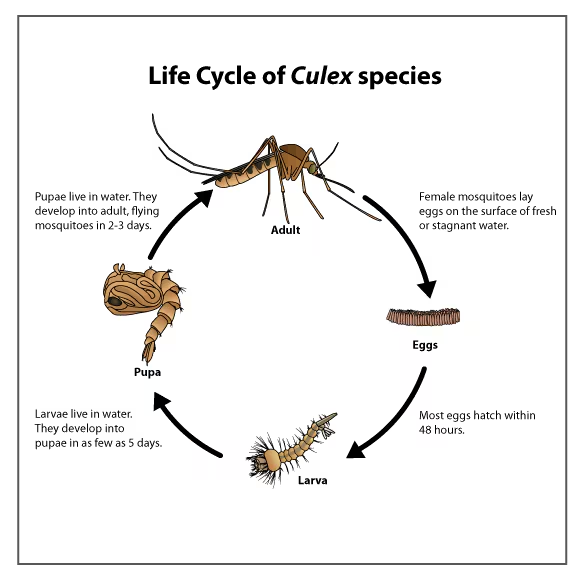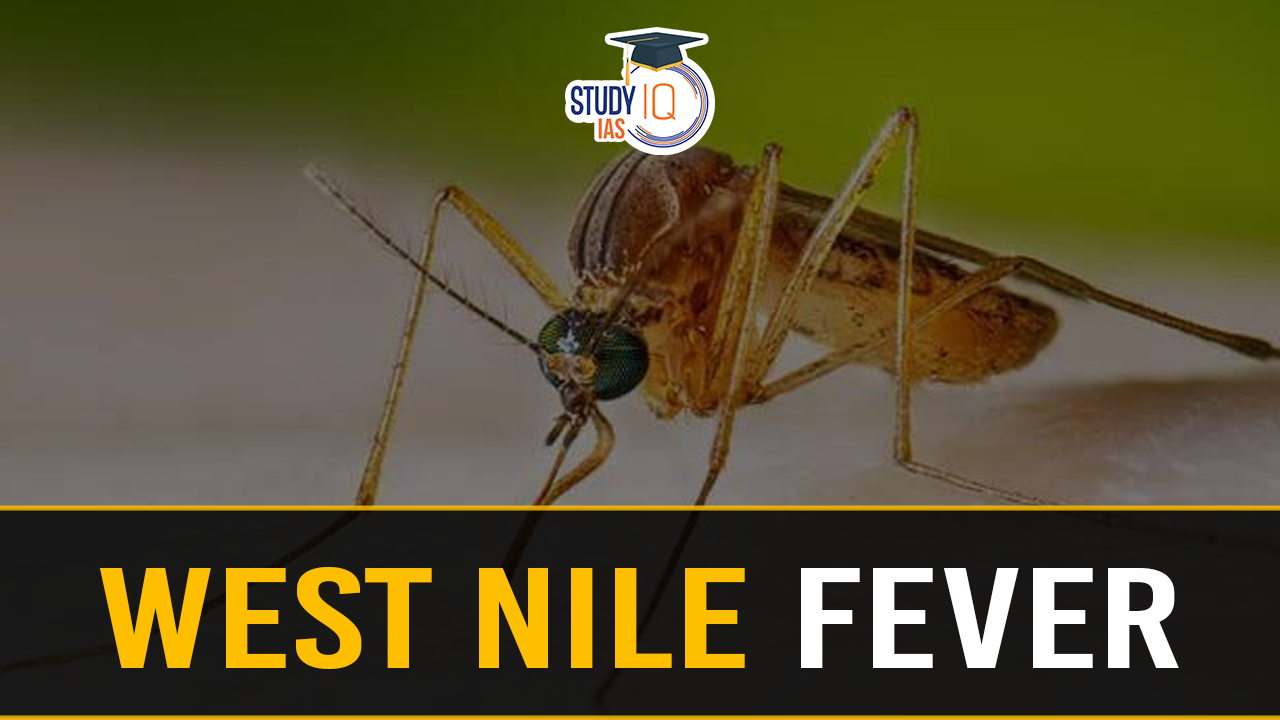Table of Contents
Context: The Kerala Government issued an alert in the state against West Nile Fever.
- Kerala is facing an early outbreak of West Nile Fever (WNF) this year, even before the monsoon season.
- With 20 suspected cases and two potential deaths reported, health authorities are on alert.
- The disease, endemic in Kerala for over two decades, often goes underreported due to its asymptomatic nature in 80% of cases.
West Nile Fever in Kerala
- Causative Agent: West Nile Fever is caused by the West Nile virus (WNV), a member of the Flavivirus genus.
- Type: It is a mosquito-borne, single-stranded RNA virus.
| Fact |
| Flavivirus is related to the viruses that cause St. Louis encephalitis, Japanese encephalitis, and yellow fever. |
Details about West Nile Fever
- Transmission: The virus is primarily spread through bites from infected Culex species mosquitoes.
-
- The principal vectors are Culex mosquitoes, which breed in stagnant, large water bodies like paddy fields.
- WNV circulates in mosquito populations through vertical transmission (adults to eggs).
- It is not typically contagious between humans, but rare human-to-human transmission can occur via blood transfusion, organ transplant, or from mother to foetus through the placenta.

- Host Range: The virus can replicate in a wide range of hosts including birds, reptiles, amphibians, mammals, mosquitoes, and ticks.
- Geographical Distribution: West Nile virus is found in Africa, Europe, the Middle East, North America, and West Asia.
- Symptoms: Common symptoms include fever, headache, muscle aches, dizziness, and loss of memory.
- Severe cases, which occur in about 1% of infected individuals, can lead to brain damage, unconsciousness, and sometimes death.
- Cases: The virus was first identified in 1937 in Uganda.
- The first detection in India occurred in Kerala in 2011.
- A notable case involved a six-year-old boy from Malappuram, Kerala, who died from the virus in 2019.
- Treatment: There is no specific vaccine available for West Nile virus.
- Treatment focuses on supportive care, which may include hospitalisation, intravenous fluids, respiratory support, and prevention of secondary infections.
- Diagnostic Challenges and Underreporting: WNF symptoms resemble other mosquito-borne diseases, making diagnosis difficult.
- The disease is only suspected when patients exhibit signs of neuroinvasive diseases like encephalitis or meningitis.
- This leads to underreporting, as most cases are recorded as Acute Encephalitis Syndrome (AES).


 UDAN Scheme, Objectives, Funding and Ach...
UDAN Scheme, Objectives, Funding and Ach...
 Indus Water Treaty 1960 Suspended by Ind...
Indus Water Treaty 1960 Suspended by Ind...
 5 Years of SVAMITVA Scheme and Its Benef...
5 Years of SVAMITVA Scheme and Its Benef...





















